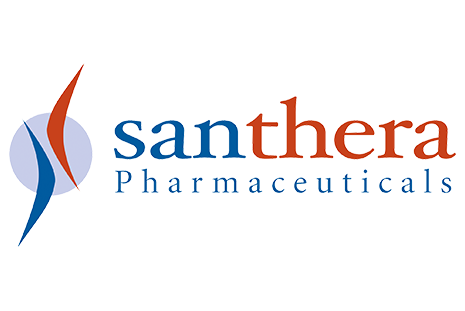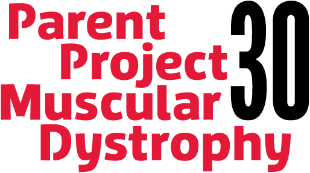
Santhera Pharmaceuticals has announced the presentation of data showing continued improvement of muscle function and improved tolerability compared with corticosteroids of 18-month vamorolone treatment in Duchenne.
PPMD was an earlier funder of this important research and we look forward to continued updates from ReveraGen and Santhera.
Santhera’s Update:
Santhera Announces Presentation by ReveraGen of Positive 18-Month Data with Vamorolone in Duchenne Muscular Dystrophy
Pratteln, Switzerland, October 7, 2019 – Santhera Pharmaceuticals (SIX: SANN) announces presentation of data showing continued improvement of muscle function and improved tolerability compared with corticosteroids of 18-month vamorolone treatment in Duchenne muscular dystrophy (DMD). These top-line data were presented on October 5 by Eric Hoffman, PhD, CEO of ReveraGen at the World Muscle Society (WMS) congress.
In a late-breaking presentation at the WMS international conference in Copenhagen, Denmark, ReveraGen presented motor function and tolerability data from 23 DMD patients treated with 2.0 or 6.0 mg/kg/day vamorolone for at least 18 months in the ongoing VBP15-LTE study.
“These data demonstrate that vamorolone treatment results in persistently improved motor function in DMD patients, similar to that of corticosteroids. Importantly, however, vamorolone treatment over a period of 18 months showed better tolerability with less corticosteroid-specific side effects, including no stunting of the growth of DMD children,” said Eric Hoffman, PhD, Chief Executive Officer of ReveraGen.
Vamorolone is a first-in-class steroidal anti-inflammatory investigational drug in development as treatment for DMD to substitute standard corticosteroids (prednisone, deflazacort). The VBP15-LTE (NCT03038399) trial is an extension study of the VBP15-003 trial in which 48 DMD patients treated for 6 months over a broad dose range (0.25 to 6.0 mg/kg/day) showed dose-related improvements in multiple gross motor outcomes [1]. Upon exiting this 6-month trial, patients and their physicians preferred to continue vamorolone treatment. 45 boys transitioned to the 2-year long-term extension study VBP15-LTE and all doses were increased to 2.0 or 6.0 mg/kg/day of vamorolone.
At the WMS conference, Dr. Hoffman presented data from 23 patients treated with 2.0 or 6.0 mg/kg/day vamorolone for at least 18 months. Vamorolone treatment consistently and significantly improved standardized motor function outcomes measured as velocity to stand from supine (p=0.012), to run/walk 10 meters (p<0.0001) and to climb 4 stairs (p=0.001) from baseline to month 18. Motor function outcomes for vamorolone treated patients also were consistently better than outcomes for age-matched, steroid naïve patients (N=19) from an external natural history study (velocity to stand from supine: p=0.085; run/walk 10 meters: p=0.005; climb 4 stairs: p=0.036; all in favor of vamorolone treatment).
In addition, motor function outcomes of vamorolone-treated DMD boys were compared to age-matched prednisone-treated patients from an external control group. Both vamorolone and prednisone treated groups showed similar improvements in these gross motor outcomes, demonstrating that vamorolone exerts therapeutic efficacy similar to standard corticosteroids. Importantly, vamorolone-treated boys showed normal growth rates, and less physician-reported weight gain and Cushingoid features compared to published studies of prednisone and deflazacort. These findings confirm earlier data that indicate a better tolerability profile of vamorolone compared to standard corticosteroids.
Together with previously reported molecular and clinical data [1-4], the new 18-month data suggest that dissociative steroidal drug vamorolone maintains efficacy and decreases adverse effects typically reported for corticosteroids in the treatment of DMD.
Vamorolone has been granted Orphan Drug status in the US and in Europe and has received Fast Track and Rare Pediatric Disease designations by the US FDA.
About Vamorolone – first-in-class dissociative steroid
Vamorolone is a first-in-class drug candidate that binds to the same receptors as corticosteroids but modifies the downstream activity of the receptors [5, 6]. This has the potential to ‘dissociate’ efficacy from typical steroid safety concerns and therefore could replace existing corticosteroids, the current standard of care in children and adolescent patients with DMD. There is significant unmet medical need in this patient group as high dose corticosteroids have severe systemic side effects that detract from treatment compliance and patient quality of life.
The currently ongoing 48-week Phase IIb VISION-DMD study (VBP15-004; NCT03439670) is designed as a pivotal trial to demonstrate efficacy and safety of vamorolone compared with prednisone and placebo in 120 boys aged 4 to <7 with DMD that have not yet been treated with corticosteroids. For more information: https://vision-dmd.info/2b-trial-information.
Vamorolone is being developed by US-based ReveraGen BioPharma Inc. with participation in funding and design of studies by several international non-profit foundations, the US National Institutes of Health, the US Department of Defense and the European Commission’s Horizon 2020 program. In November 2018, Santhera acquired from Idorsia the option to an exclusive sub-license to vamorolone in all indications and all countries worldwide (except Japan and South Korea).



 by: Parent Project Muscular Dystrophy
by: Parent Project Muscular Dystrophy

